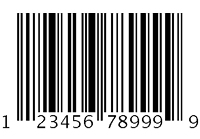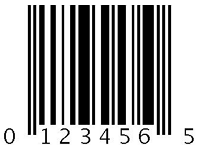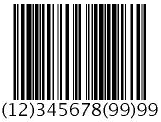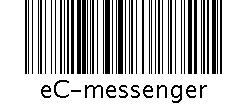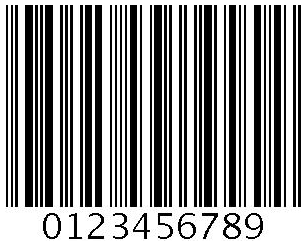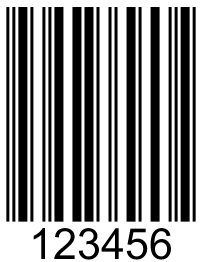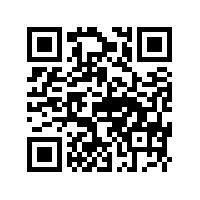Supported Barcode Types
Engage supports the creation of many different kinds of barcodes (see Barcode Generator).
The type of barcode selected depends on its intended use. The device that is used to read the barcode (for example, a cash register or mobile phone) determines the specific criteria the barcode must fulfill. It is very important to test the barcode that Engage generates on the destination scanning device. The selected barcode type must support the string of characters to be transformed and have the appropriate resolution and output format for the device on which it is scanned.
Barcode types available in the Engage Barcode Generator
Linear barcodes
Linear barcodes are also known as one-dimensional (1D) barcodes. This type of barcode stores information horizontally in lines and spaces of various widths.
Barcode Name | Example | Description |
|---|---|---|
EAN-13 |
| EAN-13 (also known as International Article Number) is a numeric barcode. This barcode is used worldwide for marking products, particularly retail items. The numbers encoded in EAN-13 barcodes are product identification numbers (see http://en.wikipedia.org/wiki/International_Article_Number_%28EAN%29). |
Code 39 |
| Code 39 is an alphanumeric barcode. This barcode is often used in non-retail, internal systems. It can encode 43 characters including numbers, capital letters and some special characters (see http://de.wikipedia.org/wiki/Code39). |
UPC-A |
| Universal Product Code-A is a numeric barcode widely used for tracking items in stores. The UPC-A barcode consists of a scannable strip of black bars and white spaces, above a sequence of 12 numerical digits. No other content of any kind may appear on a standard UPC-A barcode (see http://en.wikipedia.org/wiki/Universal_Product_Code). |
UPC-E |
| Universal Product Code-E is a numeric barcode used for small packages. UPC-E is a variation of the UPC-A barcode. It allows for a more compact barcode by eliminating unnecessary zeros. It is about half the size of an UPC-A barcode (see http://en.wikipedia.org/wiki/Universal_Product_Code). |
EAN-128 |
| EAN-128 is a numeric barcode. It is also known as GS1-128. This barcode uses a series of Application Identifiers (AI) to include additional data such as expiration dates, batch numbers, quantities, weights and other attribute information (see http://en.wikipedia.org/wiki/GS1-128). |
EAN-8 |
| EAN-8 is a numeric barcode. It is a compressed barcode derived from the EAN-128 code. It is generally used for small retail items such as candy where only limited space is available (see http://en.wikipedia.org/wiki/EAN-8). |
Code 128 |
| Code 128 is an alphanumeric barcode. It features good density and a larger selection of characters. The Code 128 character set includes the numbers 0-9, upper and lower case letters from A to Z, and all standard ASCII symbols and control codes (see http://en.wikipedia.org/wiki/Code_128). |
Codabar |
| Codabar is an older numeric barcode. It can be accurately read even when printed on dot-matrix printers or multi-part forms. Codabar is often used in libraries, blood banks and in the shipping industry (see http://en.wikipedia.org/wiki/Codabar). |
Interleaved 2 of 5 |
| Interleaved 2 of 5 (ITF) is a compact, numeric barcode. It encodes data in pairs of digits. The bars represent the first character of a pair and the spaces represent the second. It is primarily used in the distribution and warehouse industry (see http://en.wikipedia.org/wiki/Interleaved_2_of_5). |
POSTNET |
| Postal Numeric Encoding Technique is a numeric barcode. It is used by the United States postal service to direct mail delivery. The barcode has a variable length of 32 to 62 bars (see http://en.wikipedia.org/wiki/POSTNET). |
Royal-mail-cbc |
| Royal Mail Customer Bar Code (RM4SCC) is a numeric barcode. It is used in the United Kingdom by the Royal Mail to quickly read UK postcodes and Delivery Point Suffixes (DPS) (see http://en.wikipedia.org/wiki/RM4SCC). |
UPS 4cb Intelligent Mail |
| Intelligent Mail is a numeric barcode with 65 bars. It combines ZIP code routing and tracking formation into a single 4-state code and is used by the United States postal service for domestic mail delivery (see http://en.wikipedia.org/wiki/Intelligent_Mail_barcode). |
2D-Barcodes
Two-dimensional barcodes are graphical images that store information both horizontally and vertically. The storage capacity of a 2D barcode is significantly greater than that of a 1D barcode. 2D bar codes are small and easy to scan. They are often used in conjunction with mobile phones. 2D barcodes do not support human-readable content.
Barcode Name | Example | Description |
|---|---|---|
QR Code |
| Quick Response Code is the trademark for a type of 2-dimensional matrix barcode. They can store and digitally display large amounts of data, including Internet addresses, geo coordinates, and text. The codes can be read by many modern mobile devices. QR codes have a wide range of applications including manufacturing, entertainment, commercial tracking, product labels and marketing (see http://en.wikipedia.org/wiki/QR_code). |
PDF417 |
| PDF417 is a 2-dimensional, stacked barcode. PDF stands for Portable Data File and 417 represents the 17 modules of 4 bars and spaces that make up each code. The barcode can store large amounts of text and data securely and inexpensively. It is often used for identification cards, transport and inventory management (see http://en.wikipedia.org/wiki/PDF417). |
| Data Matrix |
| Data Matrix barcodes encode text or raw data in a pattern of black and white square modules. This 2D barcode can encode large amounts of data and is used in Europe and the United States for a broad range of applications including mobile marketing and the automotive industry (see http://en.wikipedia.org/wiki/Data_Matrix). |


